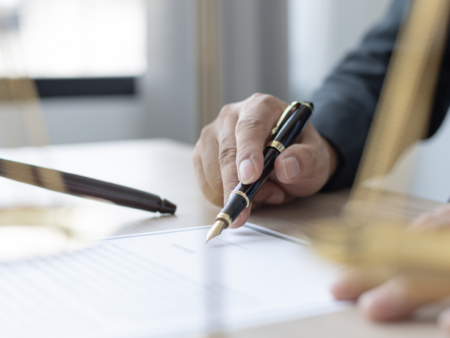Can I Patent That?

I often get this question from aspiring inventors. For those having little experience with patents, it is often eye-opening to begin by explaining the difference between the various types of patents available.
Utility Patents and Design Patents
One of the initial discussions to have with a patent attorney or agent registered to practice before the U.S. Patent & Trademark Office is to figure out how to protect your invention. “Utility” patents cover devices, methods, chemical and biological compositions, engineered biological organisms, so-called “software” patents, and similar “useful” inventions. Examples may be medical devices, cell phones, computers (hardware and software), cleaning chemicals, magnetic pipe inspection methods, and the like. This is opposed to “design” patents, which cover the ornamental features or overall shape of a physical object, such as the shape of a soda bottle, or a paisley design on a vase.
The next conversation should be around the cost of protection. Utility patents are complicated documents. The primary focus of your first patent application on an invention should be to disclose the invention with enough support that you will be able to claim many inventions later in follow-on patents. It is rare that an invention is completely covered by a single patent. Developing a patent portfolio should be a goal, similar to a stock portfolio, and like a stock portfolio, a patent portfolio allows you to readjust, trim and groom from time to time.
Getting back to the cost of protection, for a utility patent application, a good pre-search estimate is that preparing and filing a U.S. provisional patent application (PPA) or non-provisional patent application (NPA) would range from $10,000 – 15,000, plus U.S. Patent and Trademark Office (USPTO) fees, draftsman’s fees, paralegal fees, and possible non-English document translation fees. This estimate could change after review of the search results, and/or based on exactly what the inventors want to pursue a patent on. For example, there may be several additional embodiments of the device and/or methods that come to mind, requiring additional claims, drawings, and description.
Design Patents
These cover the non-functional appearance aspects of an item or apparatus and can be useful to obtain quick and relatively inexpensive patent protection. The cost to prepare and file a design patent application is typically half the cost of a utility patent, in most cases.
Advantages of design patent are that design patents are relatively easier to obtain than utility patents; there are no “maintenance” fees for design patents; and the term of 15 years runs from the date of grant, not the filing date. One disadvantage is that they may be easier to avoid infringing.
In some cases, it may be desirable to file a design patent application as a “continuation” of a utility patent application since many physical objects have both utility and design aspects. However, the best approach is to file separate utility and design patent applications on the same date, so that they may not be used against each other later.
Plant Patents
A plant patent is granted by the United States government to an inventor (or the inventor’s heirs or assigns) who has invented or discovered and asexually reproduced a distinct and new variety of plant, other than a tuber propagated plant or a plant found in an uncultivated state. The grant, which lasts for 20 years from the date of filing the application, protects the patent owner’s right to exclude others from asexually reproducing the plant, and from using, offering for sale, or selling the plant so reproduced, or any of its parts, throughout the United States, or from importing the plant so reproduced, or any part thereof, into the United States.
The USPTO also accepts utility patent applications having claims to plants, seed, and the genes of plants. Intellectual property protection for seed-reproduced plant varieties other than a utility patent is available through the USDA’s Plant Variety Protection Office, Washington, D.C., which should be contacted for information regarding non-patent intellectual property protection for such varieties.
Whatever the invention, it must be “novel” and “nonobvious”
After the patent application is filed, the main hurdles to obtaining a patent will be showing the patent claims to be novel and nonobvious. The burden is initially on the patent examiner to show that your patent claims are not novel and/or obvious in view of what is known to the public. The process of interacting with the Patent Office examiner is called “patent prosecution” and can take several years for utility patents unless the patent application is expedited using a petition as mentioned above. Design and plant patents typically have a much shorter prosecution. Appeals can be taken to a board of appeals in the Patent Office, and then even to U.S. courts.
Conclusion
The type of patent to pursue depends on the type of invention: utility, design, and plant patents are the main patent protections available today. Protection of patentable inventions takes careful planning and budgeting, and execution of that plan and sticking to the budget. Obviously, how much any individual or business entity is willing to spend to obtain protection depends on the importance of the invention. The employment of competent patent counsel is crucial to meeting the goal of creating a protectable patent portfolio.
These materials are made available by Stibbs & Co., P.C. for informational purposes only, do not constitute legal or tax advice, and are not a substitute for legal advice from qualified counsel. The laws of other states and nations may be entirely different from what is described. Your use of these materials does not create an attorney-client relationship between you and Stibbs & Co., P.C. The facts and results of each case will vary, and no particular result can be guaranteed. The facts and results of each case will vary, and no particular result can be guaranteed.




